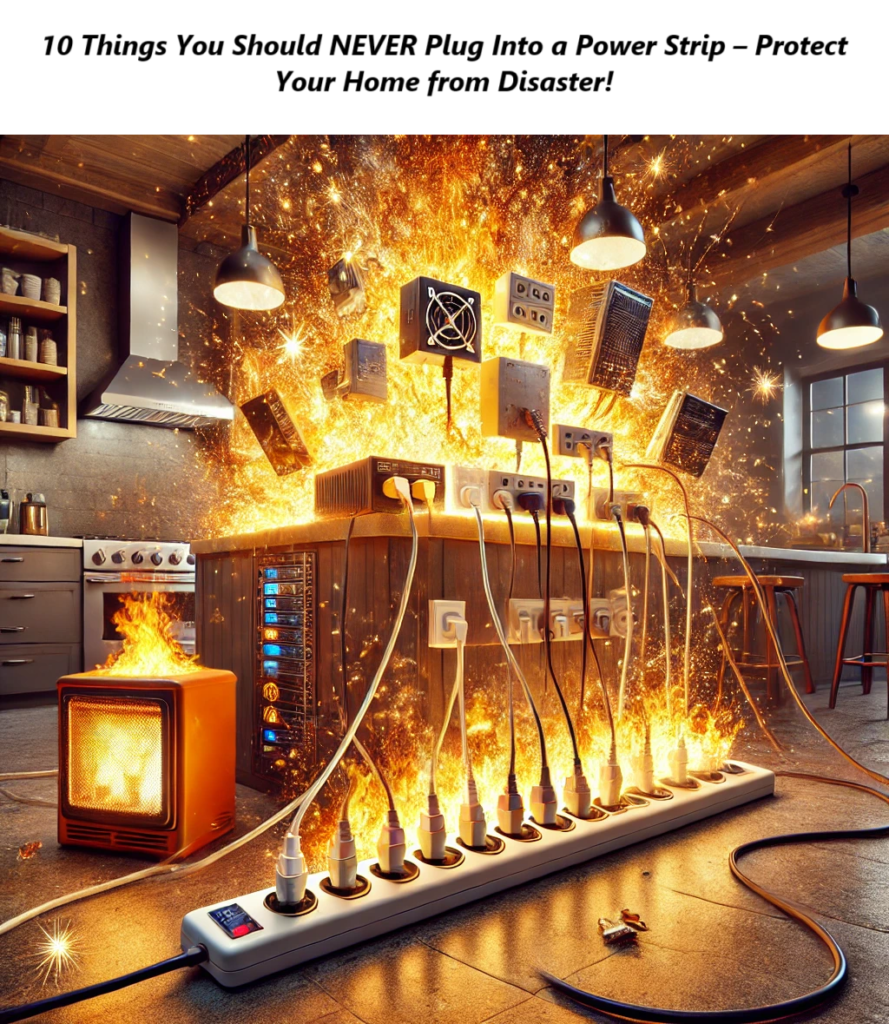10 Things You Should Never Plug Into a Power Strip: Essential Safety Tips
Power strips are a convenient solution for extending the number of outlets available in your home or office. However, not all devices are suited for these handy tools. Overloading a power strip or using it improperly can lead to electrical fires, equipment damage, and serious safety hazards. Firefighters and electrical experts warn against plugging certain high-power devices into power strips. Below, we break down the top ten things you should never connect to a power strip and why.
1. Space Heaters
Space heaters require a significant amount of power and generate high levels of heat. Plugging one into a power strip can easily cause overheating and even start a fire. Always plug space heaters directly into a wall outlet.
2. Refrigerators and Freezers
These appliances have compressors that require a stable and dedicated power source. Power strips can’t handle the sudden power surges they produce, leading to potential circuit failures.
3. Microwave Ovens
Microwaves draw a substantial amount of power when operating. Using a power strip can lead to electrical overloads, tripping the circuit, and creating a fire hazard.
4. Coffee Makers
Coffee makers, especially those with advanced brewing functions, consume a lot of power. To ensure safe operation, always connect them directly to a wall outlet.
5. Toasters and Toaster Ovens
These appliances generate intense heat and require high power. Plugging them into a power strip increases the risk of overheating and electrical fires.
6. Hair Dryers and Curling Irons
Beauty tools like hair dryers and curling irons are high-wattage devices. Power strips are not designed to handle such loads, making them a fire risk.
7. Air Conditioners
Air conditioners need a large and stable power supply to function properly. They should be connected directly to a dedicated wall outlet.
8. Washing Machines and Dryers
Next Page
8. Washing Machines and Dryers
These heavy-duty appliances demand a significant amount of electricity. Power strips can’t safely handle their electrical needs.
9. Portable Dishwashers
Like washing machines, portable dishwashers require a steady and powerful current, which power strips are not built to provide.
10. High-Powered Gaming PCs and Servers
Gaming PCs and servers often have multiple high-wattage components that demand a stable power source. Using a power strip can lead to performance issues and potential overheating.
Safety Tips for Using Power Strips
Choose Surge Protectors: Opt for power strips with built-in surge protection to safeguard your devices.
Check the Load Capacity: Ensure the total wattage of connected devices does not exceed the strip’s rating.
Inspect Regularly: Check for signs of wear, such as frayed cords or loose connections.
Avoid Daisy-Chaining: Never connect multiple power strips together.
Use Wall Outlets for High-Power Devices: Whenever possible, plug high-wattage appliances directly into a dedicated wall outlet.
Conclusion
Understanding what devices are safe to plug into a power strip can prevent accidents and protect your home. By following these guidelines and prioritizing electrical safety, you can reduce the risk of fires and ensure the longevity of your electronic devices. Stay informed, stay safe, and use power strips wisely.

